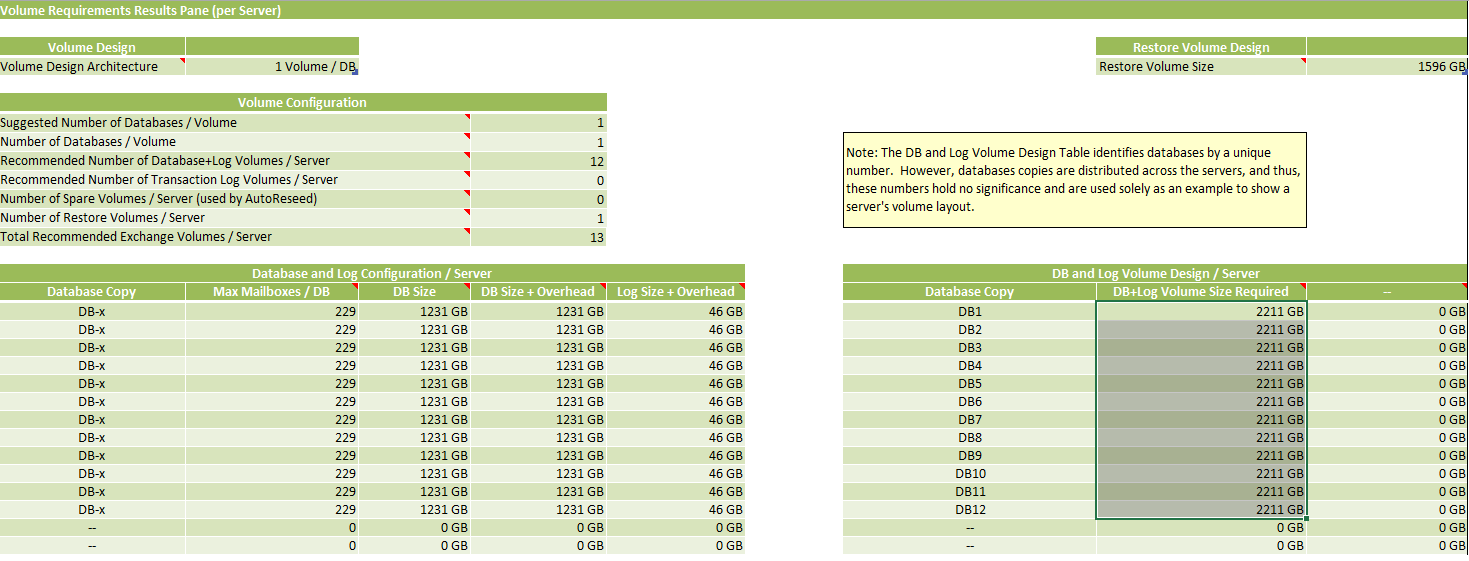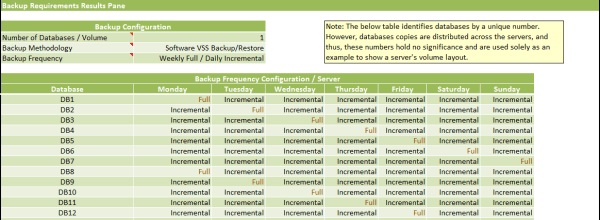Estimated reading time: 4 minutes
 Thank you for reading this post, don't forget to subscribe! Happy New Year 2024!
Thank you for reading this post, don't forget to subscribe! Happy New Year 2024!
We understood the various input options available in the Role requirement Calculator in part I. Exchange calculator uses the entire data from the input worksheet and performs the calculation based on the input data and updates details on the worksheet defined below. These worksheets are for review purpose only. Any change in the design has to be done in the input worksheet.
Let’s review the result worksheets and role requirements. We’ll provide examples via scenarios and a few visual aids too.
- Role Requirements: Based on the input factor, the calculator will recommend the architecture and will break down the Role Requirement details into the below parts:
- Environment Configuration: This configuration has detailed information of the number of CPU cores, Global Catalog, client access server, and the memory required to take up the load of the users for each site.
- Active Database Copy Configuration: It has details of the number of HA copies in primary datacenter and secondary datacenter. It also has information on the total number of DBs /DAG and users / DB.
- Server configuration: It has server hardware recommendations like RAM, CPU utilization and storage. It has detailed information of the number of database and mailboxes on each DB and IOPS required for each user on the database.
- Log disk Space and IO Requirements: It has details of Disk space required for DB and logs for a complete environment. It also has the recommended IOPs /DB /Server for a complete environment.
Role Requirements:
- Activation Scenarios
- Distribution
- Volume Requirements
- Backup Requirements
- Log Replication Requirements
- Storage Design
1) Activation Scenarios: It has details of High availability and/or site resilience information, depending on the design inputs. Activation scenario has been defined for two scenarios
Scenario 1: DAG architecture with Active/Passive user within a single Datacenter or in site resilient model
Scenario 2: DAG architecture with Active/Active user in site resilient model
2) Distribution: This worksheet is an important worksheet, which has details of DB distribution layout. It helps us to determine the active copy distribution, when one or more server has failed or even in case of WAN failures within the environment. It also provides the PowerShell scripts to configure physical disk and mount points on the servers, create and configure DAG, create & configure active and passive database copies.

Active and Passive Database copy distribution
3) Volume Requirements: It has information on the volume architecture design for each server. Based on the input worksheet, it determines the volume design architecture with multiple DBs/volume or 1 Volume /DB or 2 volumes /DG etc. It also helps us to determine the DB size, log size with overhead and the required volume size. Microsoft recommends to keep DB and log at a same volume, if we have multiple HA copies of the DB.

Database Volume Requirement / server
4) Backup Requirements: It has details of the backup methodology and backup frequency defined for the organization.

Backup Requirement configuration
5) Replication Requirements: This worksheet has information of the throughput required to replicate the transaction logs to each of the target database copies in the secondary datacenter. It calculates the peak log and content index replication throughput requirement. It also calculates the Recovery Point Objective (RPO) log and content index replication throughput requirement (it means how behind you could go in log shipping). Requirement: Higher the RPO- lesser bandwidth and lower the RPO- higher the bandwidth.
6) Storage Design: This worksheet helps you to determine the number of physical disks needed to support Database, transaction logs and restore volume configuration for each mailbox server ensuring that performance and capacity requirements are met within the design. Storage design recommends both RAID and JBOD storage solution. RAID storage Architecture recommends the required server, which has to be deployed in RAID and number of disks for each volume (database, log and resolute volume); for every mailbox server. JBOD storage architecture defines which server could be deployed in the JBOD storage architecture.
The Exchange 2013 server role requirement calculator is a comprehensive tool, which helps the Exchange administrator and architects provide a full proof architecture solution by meeting all best practices and recommendations from Microsoft. It is easy to understand, learn and design the solution quickly for the customers.
Until next time, Rob…
